Granada is the capital of the province of Andalusia. The name means pomegranate. We were told that there are numerous pomegranate trees in the city and surrounding area, but since we were visiting in the winter we didn't see any flowers or fruits. The area where the city is located has been settled since Roman times, but it didn't become a major center until the construction of the Alhambra in the 13th century.
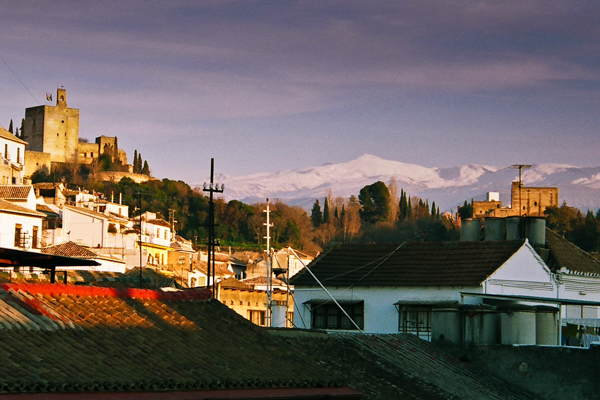
This is the view from our hotel window. The Alhambra can be seen crowning the hill on the left with the Sierra Nevada in the distance. The neighborhood between the hotel and the Alhambra is called the Albayzín and along with the Alhambra and the Generalife (pronounced more-or-less HEN-er-al-LEE-fee) is a UNESCO World Heritage Site. We had a walking tour of it the next day.
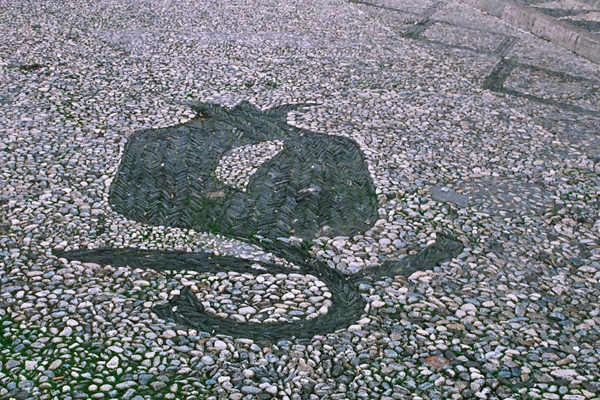 As
noted above, Granada means pomegranate in Spanish and the symbol of
the city is the pomegranate. We saw them everywhere – on street
signs and here laid in the stones of the city streets.
As
noted above, Granada means pomegranate in Spanish and the symbol of
the city is the pomegranate. We saw them everywhere – on street
signs and here laid in the stones of the city streets.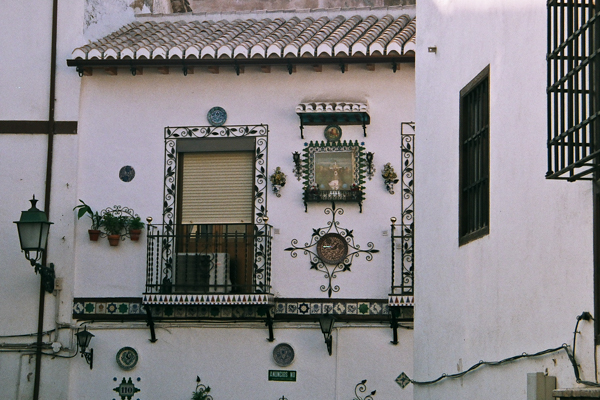 The
houses in the the Albayzín tend to be modest and plain. This
one was an exception with the elaborate decoration. How did they get
it past the neighborhood architectural review board?
The
houses in the the Albayzín tend to be modest and plain. This
one was an exception with the elaborate decoration. How did they get
it past the neighborhood architectural review board?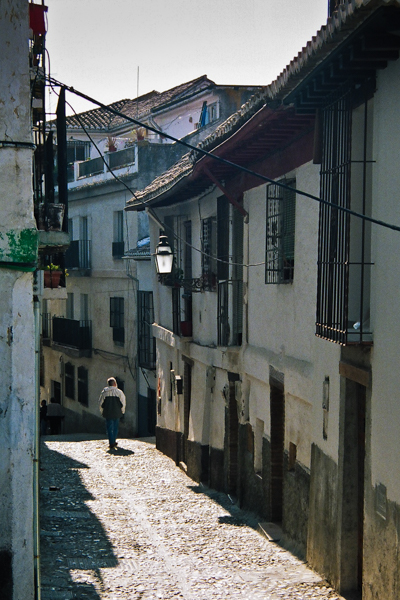 This
is a more typical sight of the medieval neighborhood. The streets are
steep and narrow with modest houses or apartments lining them.
This
is a more typical sight of the medieval neighborhood. The streets are
steep and narrow with modest houses or apartments lining them.One of the benefits of traveling in the winter is that tourist spots that are normally jam-packed are often very quiet.
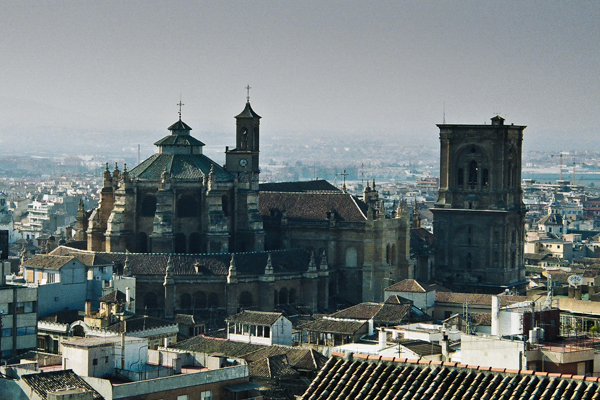 The
Albayzín overlooks the modern city. The
Granada cathedral,
isn't exactly modern as it was built in the 16th century on the
site of the much older mosque.
The
Albayzín overlooks the modern city. The
Granada cathedral,
isn't exactly modern as it was built in the 16th century on the
site of the much older mosque.It adjoins the somewhat earlier Capilla Real, or royal chapel, the resting place of rulers Ferdinand and Isabel. We didn't visit the inside of the cathedral, but the chapel was very lovely inside and out.
Early in our stay at Granada we were saddened that one of our number fell in her room and broke an arm. The local hospital was able to treat it successfully, but she elected to return home to convalesce.
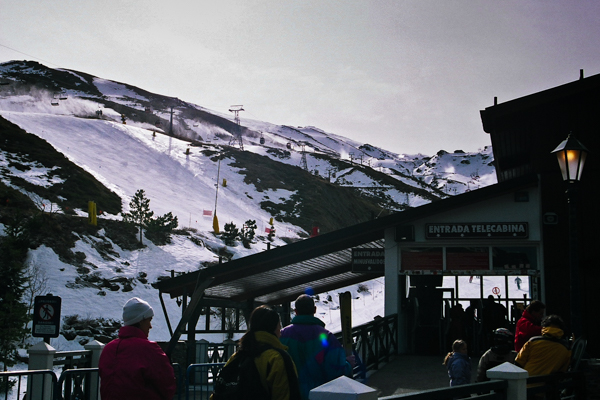 What
is a ski trip without skiing? The bus ride to the ski resort was over
an hour on twisty roads. When we got there, the snow cover was marginal at the base. (It was better at the top, but I didn't take
my camera with me.) We had elected not to drag our skis all over Spain and
Morocco, so we rented skis here.
What
is a ski trip without skiing? The bus ride to the ski resort was over
an hour on twisty roads. When we got there, the snow cover was marginal at the base. (It was better at the top, but I didn't take
my camera with me.) We had elected not to drag our skis all over Spain and
Morocco, so we rented skis here.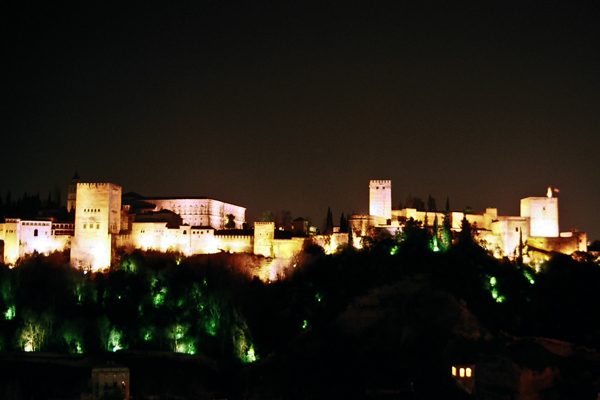 Our
last photo op of the Alhambra was this nighttime view from the patio
of a restaurant where we had our final meal before leaving for the Costa
del Sol.
Our
last photo op of the Alhambra was this nighttime view from the patio
of a restaurant where we had our final meal before leaving for the Costa
del Sol.We were sorry to say goodbye to Granada (and the Santa Paula), but were looking forward to new adventures.
Click your "back" button to return to the previous page or click for our picture album.